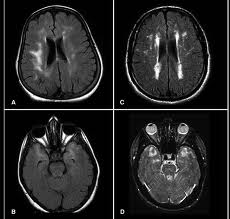The burden of comorbid medical illness is high, and is linked to increased prescribing of psychotropic drugs, in patients with bipolar I and II disorder, based on findings from the Lithium Treatment – Moderate Dose Use Study, or LiTMUS.
Clinically significant medical burden, defined by a score of 4 or more on the Cumulative Illness Rating Scale (CIRS), was present in 139 of 264 LiTMUS participants with available CIRS data. A score of 4 or higher on the 14-point scale indicates that a patient has at least two moderately disabling medical problems requiring first-line treatment, Dr. David E. Kemp of Case Western Reserve University, Cleveland, and his colleagues reported in a poster. They presented their findings at a meeting of the New Clinical Drug Evaluation Unit sponsored by the National Institute of Mental Health.
The 139 patients with high medical comorbidity were significantly more likely than were those with low medical comorbidity to present in a current major depressive episode (71.3% vs. 57.8%), to have obsessive-compulsive disorder (14.4% vs. 5.6%), and to have previous mood episodes (66.5% vs. 37.7%), and previous manic or hypomanic episodes (34.9% vs. 18.3%), the investigators said.
Those with high medical comorbidity were also more likely to be female (61.9% vs. 50.4%) and to have previous depressive episodes (29.5% vs. 19.7%), although these measures did not reach statistical significance.
“Patients with high vs. low medical comorbidity burden experienced an average of 10 additional depressive episodes and 15 additional manic or hypomanic episodes over their lifetime,” the investigators noted.
As for psychotropic medication use, those with high medical comorbidity were prescribed an average of 2.9 medications, compared with 2.3 for those with low medical comorbidity, a statistically significant difference, the investigators said.
The most common comorbid medical conditions in LiTMUS participants were migraines, hypertension, hyperlipidemia, and asthma, occurring in 24%, 17%, 15%, and 15% of study participants, respectively. The most common organ systems affected by medical comorbidity were the musculoskeletal, respiratory, and endocrine systems (in 33%, 27%, and 25% of participants, respectively).
Of note, hypertension and dyslipidemia were frequently underrecognized and undertreated in this population. Hypertension was diagnosed by a clinician in 44% of participants, but reported by only 17% of the patients; dyslipidemia was diagnosed by a clinician in 31% of participants, but reported by only 15%.
Additionally, 70% of the sample was overweight or obese. More males than females with bipolar I disorder were overweight, whereas more females than males with bipolar I disorder were obese. African Americans were the ethnic group with the highest rate (31%) of grade 2 obesity, defined as a body mass index of 35 kg/m2 or greater, they noted.
LiTMUS was undertaken to estimate the prevalence and burden of general medical illnesses among patients with bipolar disorder and to identify the potential associations between those illnesses and the clinical features of bipolar disorder, the investigators said. Dr. Kemp and his colleagues explained that patients with bipolar disorder are known to have an increased risk for several general medical conditions, which contribute to an up to 30% shorter life expectancy in this population, compared with the general population.
Previous studies have identified links between cardiometabolic disorders and psychiatric illness severity suggestive of a genetic and pathophysiologic diathesis that predisposes vulnerable individuals to the concurrent development of mood symptoms and medical conditions, they said.
Participants were adults aged 18 years or older with bipolar I or II disorder and mood symptoms of at least mild severity that warranted a change in treatment. Having symptoms of at least mild severity was defined as a score of 3 or greater on the Clinical Global Impression Scale-Bipolar Version.
The findings reinforce the notion that bipolar disorder is associated with a high burden of comorbid medical illnesses, which appear to influence the course of the illness and psychotropic prescribing patterns, and they “highlight the multisystem involvement in bipolar disorder and the need for improved understanding of the relationships between psychiatric pathology and medical illness,” the investigators concluded.
This study was funded by the National Institute of Mental Health. The authors had no disclosures.


0 Comments